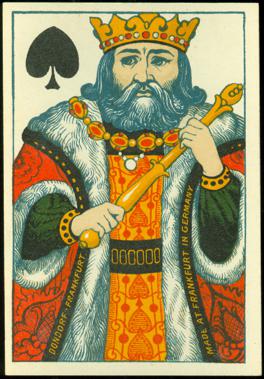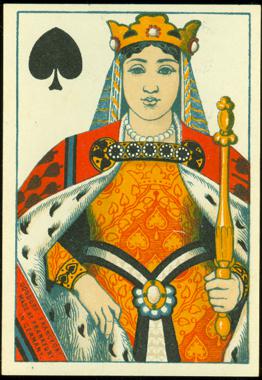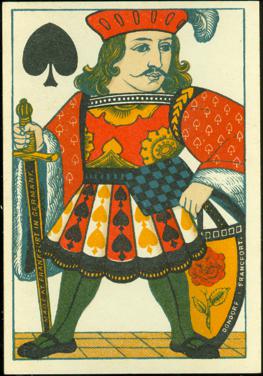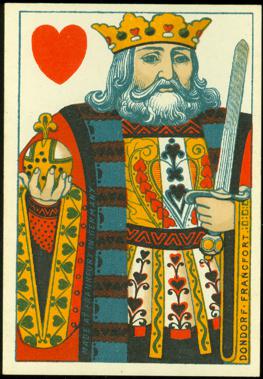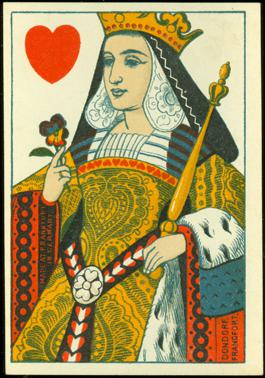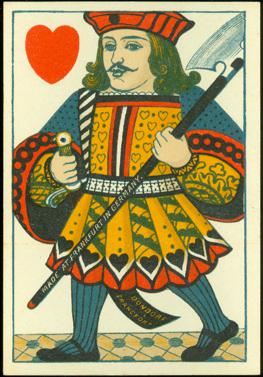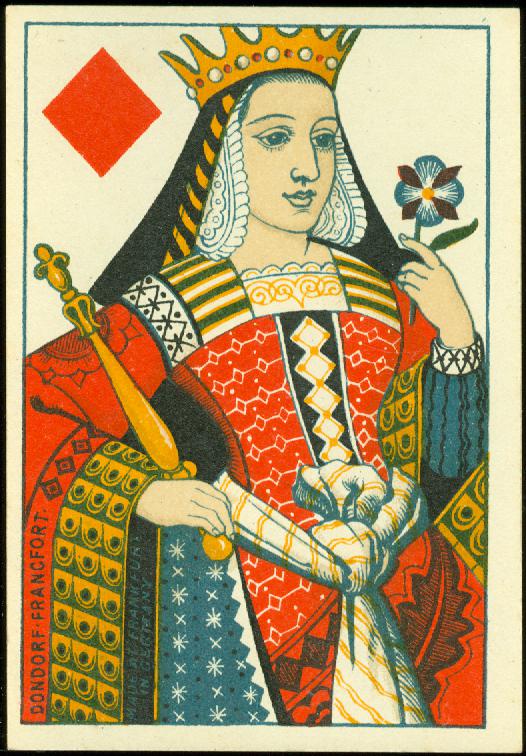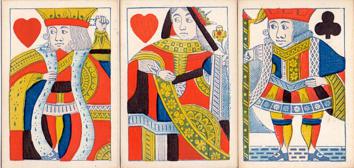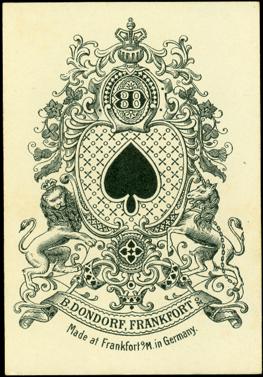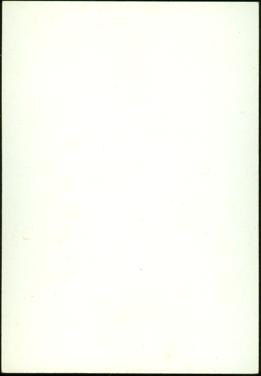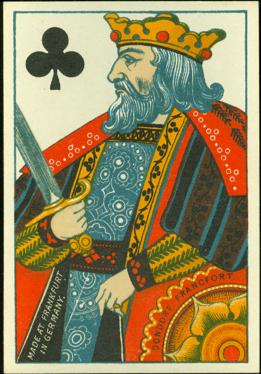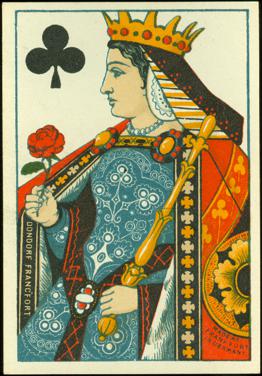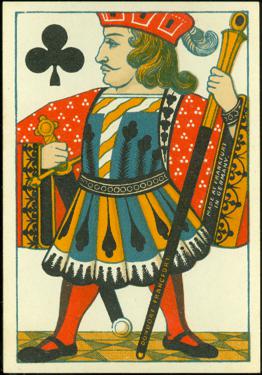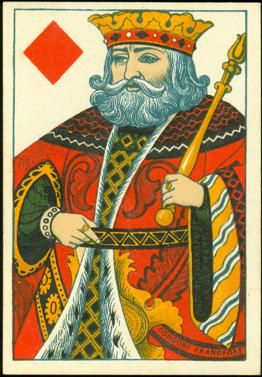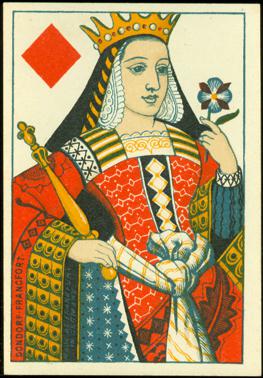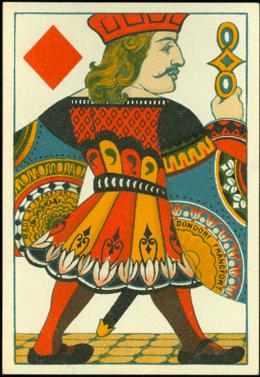|
Spring has officially begun this month, but even before the 21st we've had some splendid, sunny weather. The people who organize the outside markets obviously weren't ready for it yet and there were only inside flea markets this month. Joop visited just one, spent 15 minutes wading though clothes and ended up empty handed. |
We will mention the "Moyen Age" deck from around 1870 by the Belgian maker Daveluy, the "Golden Diamond" deck from 1925 by the Hanzel Card Co. from Chicago and a Greek deck, published there by Ballentines and the Playboy, of which the faces show an exact reproduction of the famous Vargas pin-up deck. |
He did visit the Belgian collectors meeting in Lokeren on the 9th and brought home a few new decks for our collection. But Ebay also was a good source for decks again and the Dutch auction site held a nice surprise too this month. So we had a very interesting short list by the end of the month.
|
